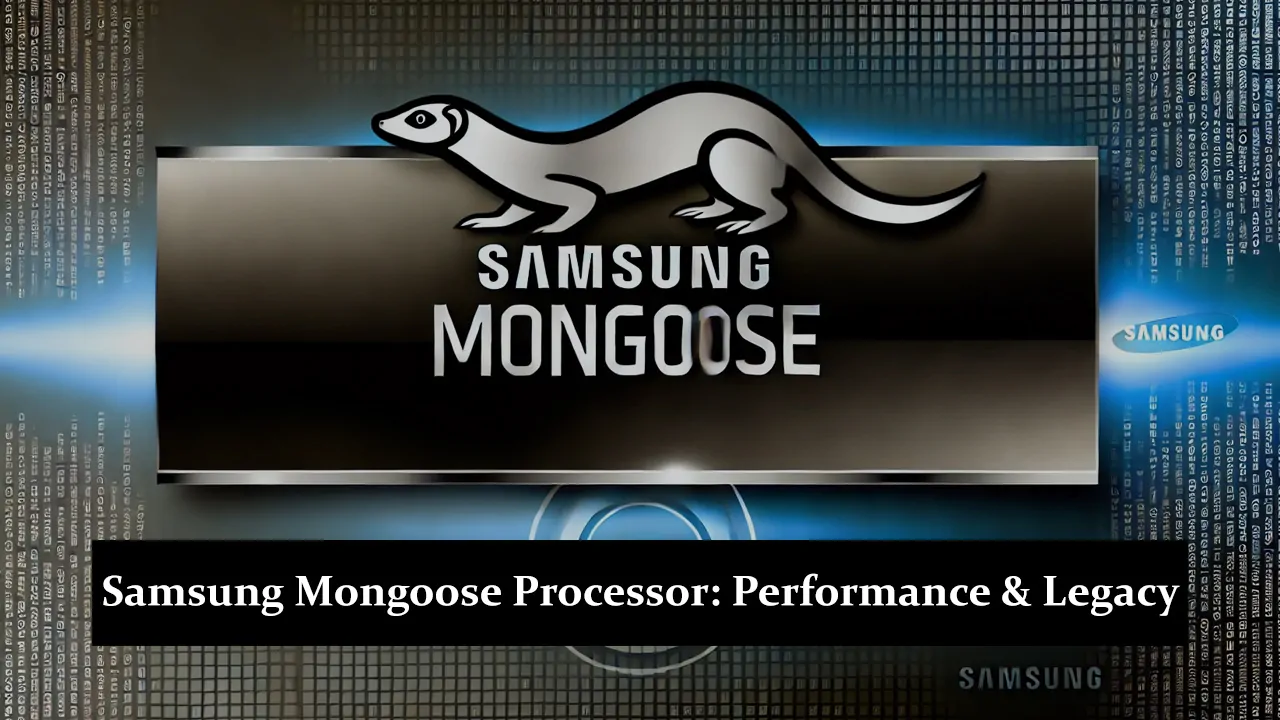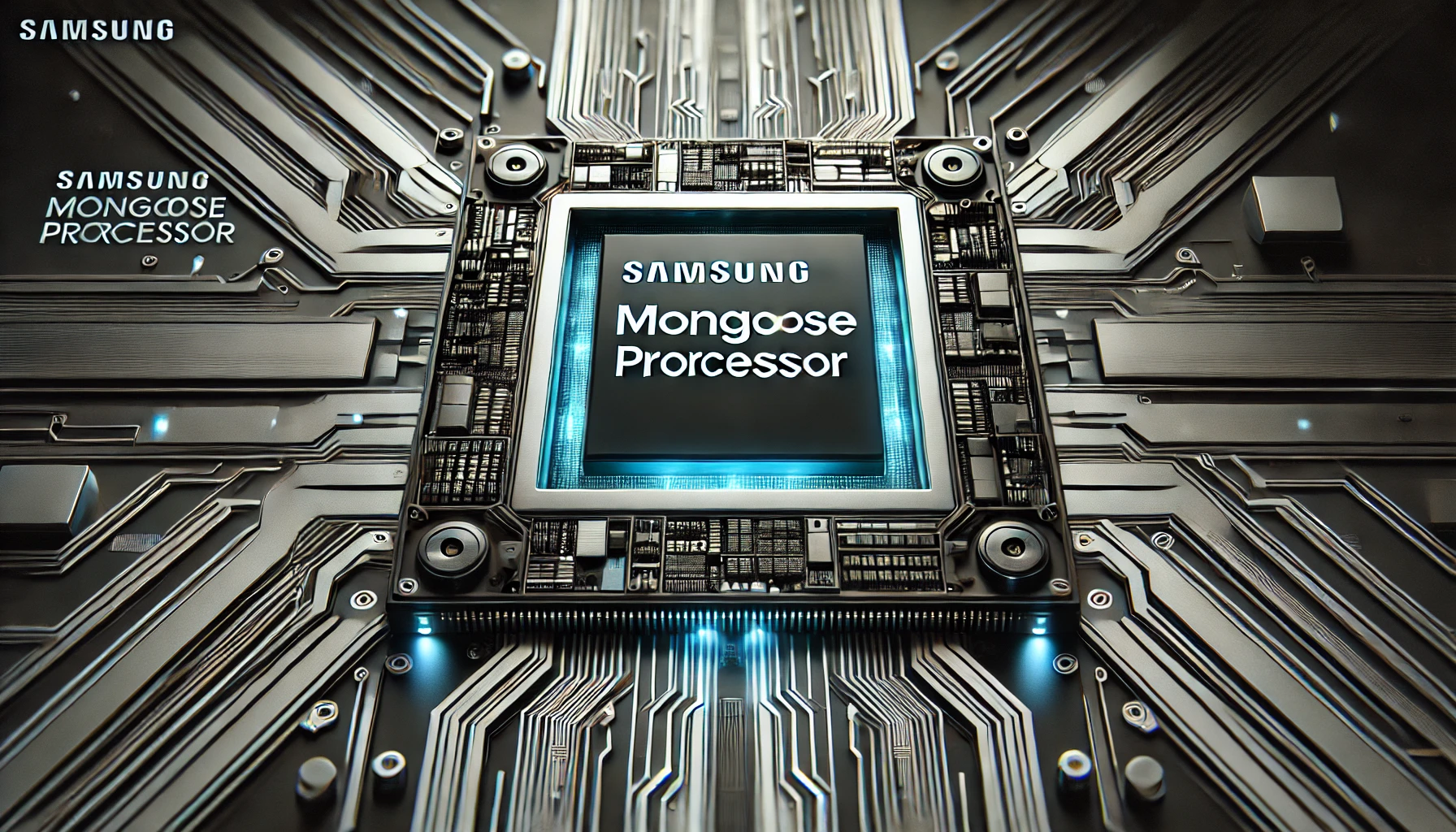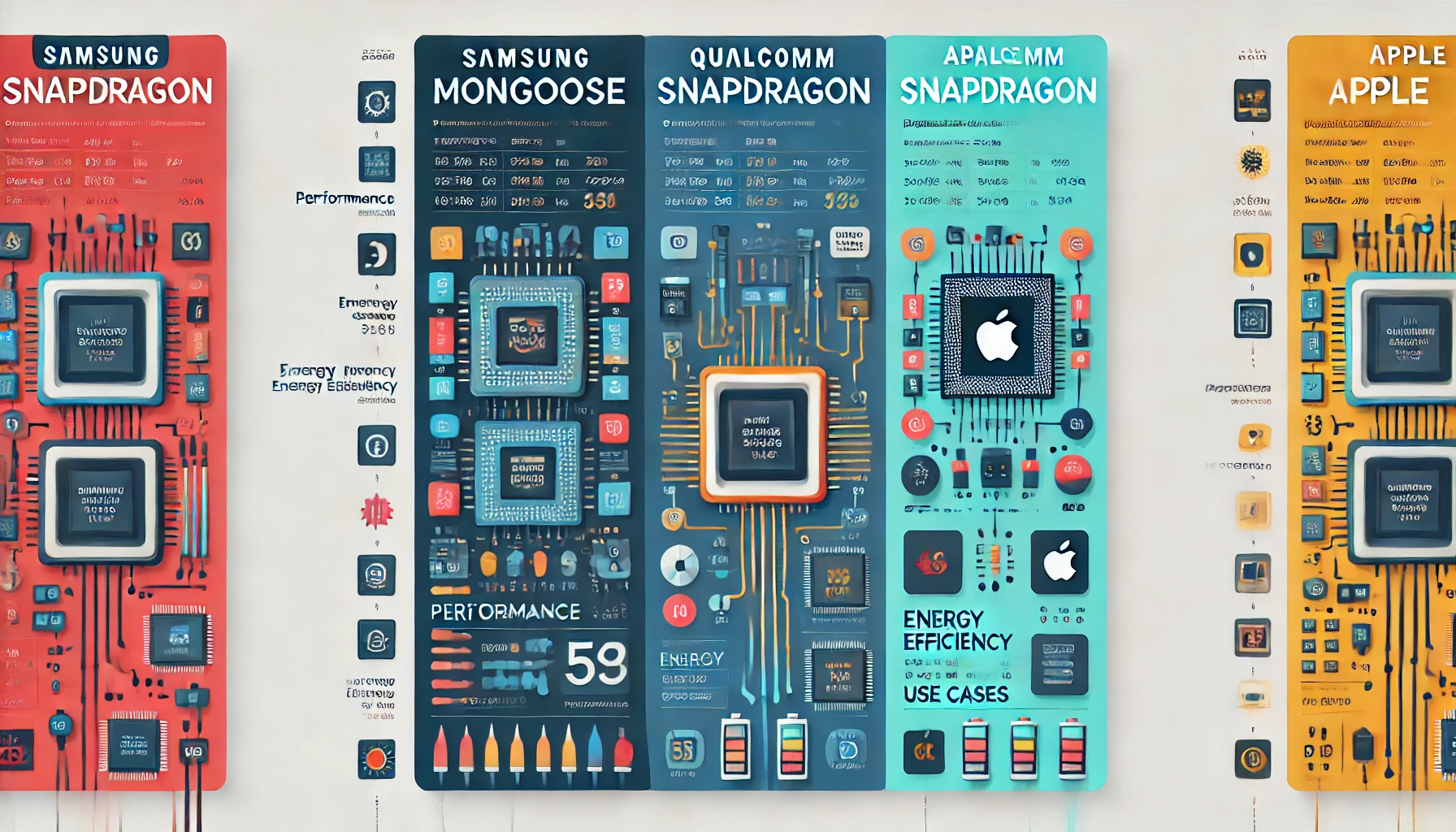Samsung’s Exynos series has been crucial in mobile chipsets, with the Mongoose processor as a standout. The custom Mongoose CPU cores gave Samsung more control over performance and optimisation. This was vital to compete with Qualcomm and Apple’s custom cores. Developing custom cores helped Samsung improve processing speed and energy efficiency. Though it faced challenges, Mongoose represented a bold step in Samsung’s mobile processor innovation.
History and Background of Samsung Mongoose Processor
The Samsung Mongoose processor debuted in 2016 with the Exynos 8890, marking Samsung’s foray into custom CPU core development. Over the next few years, Samsung continued to refine the Mongoose core, releasing several versions, with the final iteration seen in the Exynos 990 in 2020. Samsung’s motivation for creating its custom cores stemmed from a desire to optimise performance and differentiate its processors from competitors like Qualcomm. Key devices powered by Mongoose processors included the Galaxy S7, S8, and S20 series, showcasing the processor’s capabilities in flagship smartphones.
Architecture and Technical Specifications
ARM-based Architecture
The Mongoose processors were built on ARM architecture, which Samsung specifically customised to deliver higher performance. This allowed Samsung to balance compatibility with existing ARM standards while pushing their custom core designs to achieve better speeds and efficiency.
Key Technical Specs
Mongoose processors featured multiple cores, with configurations like quad-core or octa-core setups. Clock speeds varied across generations, reaching up to 2.73 GHz in later versions. They focused on high performance while also striving to maintain power efficiency for mobile devices.
Process Technology
Samsung used advanced process technologies to build Mongoose processors, transitioning from a 14nm FinFET process in early versions to a more power-efficient 7nm process in the final iteration. These advancements helped improve overall efficiency and performance.
Integration into Exynos SoCs
Mongoose cores were integrated into Samsung’s Exynos System-on-Chips (SoCs), working alongside ARM Cortex cores to create a hybrid design. This allowed for powerful performance in tasks requiring higher computing power while maintaining efficiency in lighter operations.
Performance of Samsung Mongoose Processor
Benchmarks and Performance
The Mongoose processor performed well in various benchmark tests, particularly multi-core tasks. It often ranked highly in synthetic tests designed to measure raw processing power. However, it sometimes lagged behind competitors like Qualcomm in specific scenarios. It showed strong potential in CPU-heavy tasks, reflecting Samsung’s focus on custom cores. Its performance made it a strong contender in mobile processing.
Strengths in Multi-core vs Single-core Performance
The Mongoose processor shined in multi-core tasks, handling parallel processes efficiently. This made it ideal for multitasking and applications requiring multiple cores to work simultaneously. However, it faced more competition in single-core tasks, particularly Qualcomm’s Snapdragon processors, which performed better in these scenarios. The balance between single and multi-core strengths was an important factor for Samsung. It allowed Mongoose to excel in different types of workloads.
Performance in Real-world Tasks
The Mongoose processor provided smooth performance in gaming, handling graphics-intensive applications without major issues. It also performed well in multitasking, managing multiple apps running simultaneously. However, the processor’s power consumption in high-performance scenarios was noticeable, leading to faster battery drain in earlier models. Improvements in later versions helped optimise power usage. Overall, the Mongoose processor offered a strong user experience in real-world applications.
Power Efficiency of Samsung Mongoose Processor
The Samsung Mongoose processor faced power consumption and thermal efficiency challenges, particularly in its early iterations. High performance in demanding tasks often led to increased heat generation and faster battery drain. To address this, Samsung implemented various power management techniques, including transitioning to a 7nm process in later models, significantly improving power efficiency. Samsung also optimised the thermal design to manage heat dissipation during intense usage better. These adjustments helped the Mongoose processor maintain better energy efficiency without sacrificing performance.
Challenges Faced by Samsung Mongoose Processor
- Issues with performance consistency: The Mongoose processor struggled with maintaining consistent performance under heavy workloads, leading to fluctuations in processing speeds.
- Heating and thermal throttling challenges: Due to its high performance, the processor often generated excess heat, causing thermal throttling, which reduced performance to prevent overheating.
- Criticisms from tech reviewers and users: Users criticised the Mongoose processor for its power inefficiency, heating issues, and overall performance compared to rival chipsets like Qualcomm’s Snapdragon series.
Competition and Comparison
How it Stacks Up Against Qualcomm’s Snapdragon and Apple’s Custom Cores
The Samsung Mongoose processor competed directly with Qualcomm’s Snapdragon and Apple’s custom cores. While it delivered strong multi-core performance, it lagged behind both Snapdragon and Apple’s cores in single-core performance and power efficiency. Apple’s custom cores were known for superior efficiency, while Snapdragon consistently provided better overall performance.
Advantages and Disadvantages Compared to Other SoCs
The Mongoose processor’s custom architecture allowed Samsung to optimise specific performance aspects, such as multitasking and high-intensity tasks. However, it was less power-efficient than Qualcomm’s Snapdragon, which delivered better battery life. Apple’s custom cores outperformed Mongoose in energy efficiency and thermal management, making Mongoose less competitive in these areas.
The Role of GPU Integration (Mali or Custom GPUs)
Samsung paired the Mongoose processors with Mali GPUs in its Exynos SoCs, which provided solid graphical performance, especially in gaming and multimedia tasks. However, the custom GPU integration in Apple’s SoCs offered smoother performance and better optimisation for iOS devices. Qualcomm’s Adreno GPUs also had an edge in terms of graphical performance, especially in Android-based systems, where they were better optimised than the Mali GPUs used by Samsung.
Impact on Samsung Devices
Mongoose in Galaxy S and Note Series
The Mongoose processor was a key component in several flagship devices from Samsung’s Galaxy S and Note series, including the Galaxy S7, S8, S20, and Note 10. These devices leveraged the Mongoose core for their high-performance needs, positioning them as powerful alternatives in the global smartphone market.
User Experiences with These Devices
While users praised the performance and multitasking capabilities of the Galaxy devices powered by Mongoose processors, many also noted issues like heating and inconsistent battery life. The processor’s power efficiency often lagged behind competitors, leading to mixed user reviews, especially in regions where Exynos SoCs were used instead of Qualcomm’s Snapdragon.
Key Models That Benefited Most from the Mongoose Core
The Galaxy S7 and S8 series were among the most notable devices to benefit from the Mongoose core, providing strong multi-core performance and excellent graphics capabilities. The Galaxy Note 10 also leveraged the processor’s power, particularly in tasks like gaming and productivity, where multitasking was crucial.
The End of the Mongoose Processor
Why Samsung Discontinued the Mongoose Core
Samsung discontinued the Mongoose processor due to its power efficiency and heat management struggles compared to rival processors like Qualcomm’s Snapdragon. The high cost of developing custom CPU cores and the performance gap with competitors led Samsung to refocus its efforts on more efficient designs.
Shift to ARM-based CPU Designs in Newer Exynos Processors
After discontinuing the Mongoose core, Samsung transitioned to ARM-based CPU designs in newer Exynos processors. This move allowed the company to adopt ARM’s more efficient and widely used architecture, helping it compete more effectively in performance and power management.
Samsung’s Focus on Other Technologies Like AI and 5G
With the end of the Mongoose core, Samsung redirected its focus toward advancements in AI processing and 5G integration. By enhancing capabilities in artificial intelligence and next-generation networks, Samsung aimed to stay competitive in the evolving mobile phone market, ensuring its devices were well-equipped for future technology demands.
Conclusion
The Mongoose processor left a notable legacy in Samsung’s custom silicon journey, marking an ambitious step in developing its CPU cores. While it faced power efficiency and performance consistency challenges, it played a key role in advancing the Exynos series. The lessons learned from Mongoose helped Samsung refine its approach, leading to more efficient designs in newer Exynos processors. Though short-lived, the Mongoose project showcased Samsung’s dedication to innovation. It paved the way for future developments in mobile processing and custom silicon.








